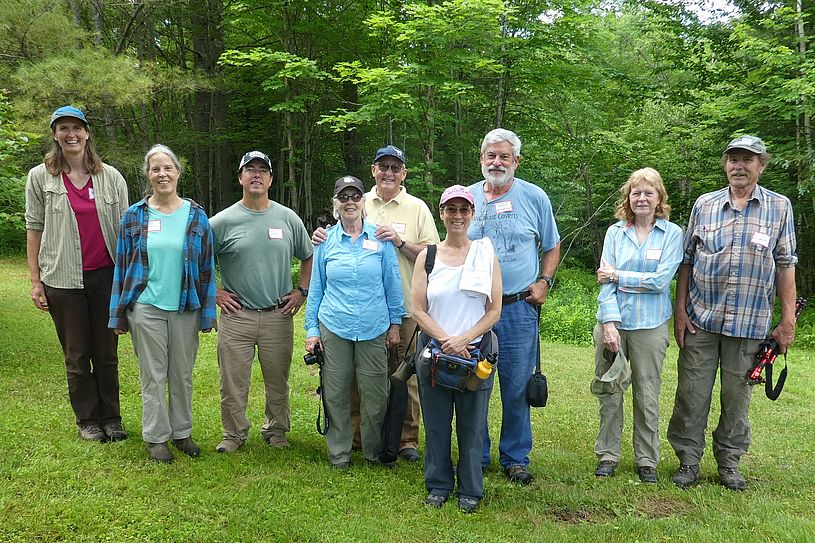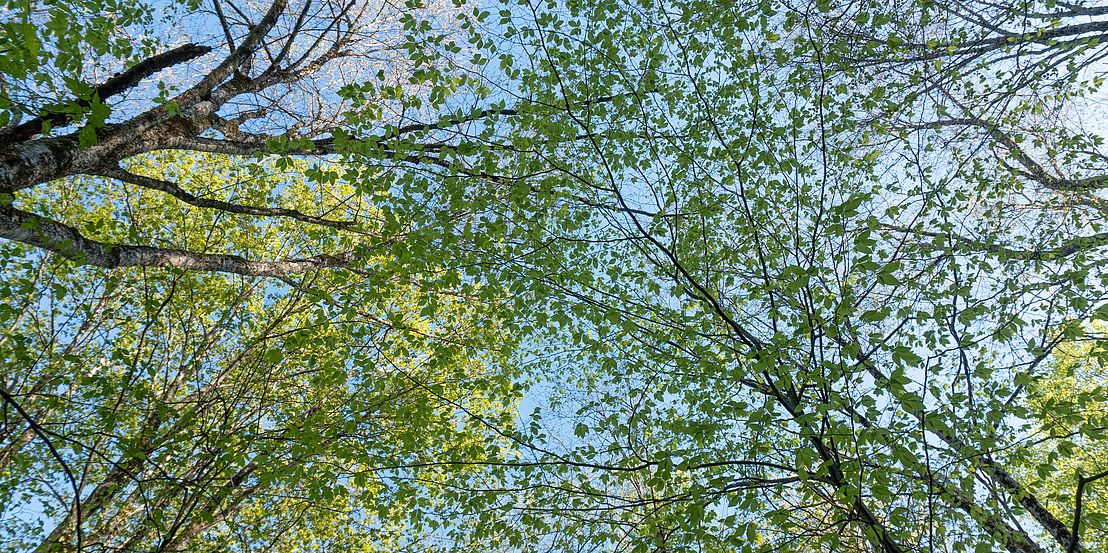Programming
Cold Hollow to Canada programs follow a “routine” at the beginning… and then we let the program go where it wants to go! The initial routine goes like this:

Getting to Know the Group
The first several gatherings are about getting to know the group and understanding what factors unite everyone. In CHC’s case, landowners all own at least 50 acres of forestland in areas that have been identified as important blocks for forest resilience and wildlife connectivity. In the first gatherings, we address these topics that have brought the group together. Maps provide ideal visuals, allowing us to highlight each participant’s land on the map and see how they connect.
Remember that group participants are interested in learning from each other in addition to hearing from guest speakers. While programs may be easiest to plan if there is a topic or theme, be sure to leave time for the hosting landowner to simply share their story. What do they appreciate about their land? What’s the story that brought them to this place? What management or stewardship activities do they engage in–and why? Participants are every bit as interested in these stories and discussions as they are in more formal programming, particularly in the early stages of a Woodlots group's formation.
Forest Bird Habitat Assessments
Over the first summer season, our landowners receive Forest Bird Habitat Assessments from Audubon Vermont. This successful partnership benefits both CHC and Audubon. For CHC, it provides an engagement tool that we can use to give something back to landowners. While Audubon performs these assessments for landowners throughout the state, they appreciate working with Woodlots groups because landowners are likely to act on the information provided. Through Woodlots programming, participants can discuss next steps, see what others are doing, and be reminded about the findings of the assessments on a regular basis.
At a gathering the fall or winter after assessments are written, an Audubon staff member presents their work to the full group. This allows participants to understand not only how to enhance bird habitat on their own land but also to see what bird habitat exists across the entire region. At following gatherings, this material can be reincorporated frequently.
Climate Change Analyses
Once the Forest Bird Habitat Assessments have been completed, CHC staff--in conjunction with VT Department of Forests, Parks, and Recreation--compile Climate Change Analyses for each landowner. These analyses look at each existing management plan with an eye toward strategies that provide climate resilience or adaptation.
Once completed, these analyses provide a discussion topic at a subsequent gathering. Once again, landowners get a sense not only of how their own management influences the forest in a changing climate, but what others in their region are also doing.


Communicating with Landowners Between Gatherings
By this time, it will likely be clear what additional topics or information may be of interest to a group. In some cases, digging into the details of bird habitat management or climate forestry may be of interest. In other cases, new topics may be more attractive. Now it may be time to bring in additional guest speakers, find experts who can help with the details, or simply let the interests and expertise of the landowners themselves guide the way!
Preparing for a Gathering
In anticipation of each Woodlots gathering, there's a fairly standard list of tasks to accomplish. We've created templates that streamline this process for us. Please feel free to use these, or adapt them as needed:
Woodlots Gathering TO DO ListWoodlots Gathering Email Samples
While this programming works for us, we encourage you to think carefullly about the type of content that will match (A) the goals of your program, and (B) the people in the program.

